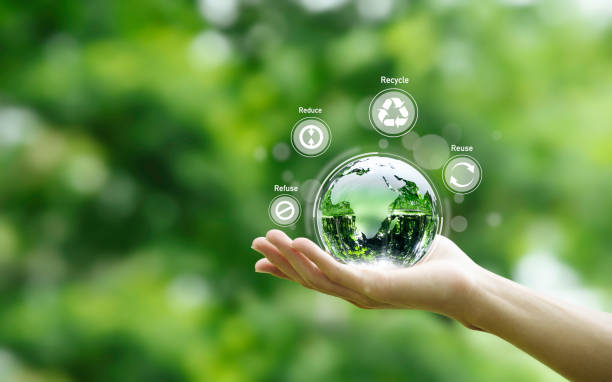
In today’s rapidly urbanizing world, waste management has become a critical challenge. The ever-increasing amount of waste generated by households, industries, and businesses poses significant threats to public health and the environment.
However, technology is stepping up as a game-changer, offering innovative solutions to tackle these challenges. From smart bins to artificial intelligence (AI), technological advancements are redefining the way we manage waste and paving the way for a cleaner, more sustainable future.
The Need for Technology in Waste Management
With global waste production expected to reach 3.4 billion tons by 2050, traditional waste management systems are proving inadequate. Landfills are overflowing, recycling rates remain low in many regions, and improper waste disposal continues to pollute air, water, and soil. To address these issues, technology is being leveraged to make waste management more efficient, cost-effective, and environmentally friendly.
1. Smart Waste Collection Systems
One of the most significant advancements in waste management is the use of smart technology for waste collection. Cities worldwide are adopting IoT (Internet of Things)-enabled smart bins equipped with sensors to monitor waste levels. These sensors alert waste management companies when bins are full, optimizing collection routes and schedules.
For instance, smart waste collection systems reduce unnecessary trips to half-empty bins, saving fuel and reducing carbon emissions. In cities like Barcelona and Singapore, this approach has significantly improved operational efficiency while minimizing environmental impact.
2. Revolutionizing Recycling with AI
Recycling is a cornerstone of sustainable waste management, but manual sorting processes are time-consuming and error-prone. AI-powered robots are now being employed to sort recyclable materials more accurately and efficiently.
These robots use advanced image recognition technology to identify and separate plastics, metals, glass, and other materials. Companies like AMP Robotics have developed AI systems that can process materials at speeds far exceeding human capability. By enhancing recycling rates and reducing contamination, AI is helping create a circular economy where waste is transformed into valuable resources.
3. Blockchain for Waste Tracking
Blockchain technology is being utilized to bring transparency and accountability to waste management. By creating a decentralized ledger, blockchain enables real-time tracking of waste from its origin to its final destination.
This is particularly beneficial in managing hazardous waste, ensuring proper disposal, and preventing illegal dumping. Governments and organizations can also use blockchain data to monitor recycling rates and incentivize eco-friendly practices.
4. Waste-to-Energy Technologies
Converting waste into energy is an innovative solution to the dual challenges of waste management and energy production. Advanced waste-to-energy (WTE) technologies use incineration, anaerobic digestion, and gasification to transform waste into electricity, heat, or fuel.
For example, anaerobic digestion processes organic waste to produce biogas, which can be used for cooking, heating, or generating electricity. Countries like Sweden have embraced WTE technologies to the extent that they import waste from other nations to keep their plants running.
5. 3D Printing and Waste Utilization
The advent of 3D printing has opened new doors for repurposing waste materials. Plastic waste, for example, can be shredded and turned into filament for 3D printers. This not only reduces landfill waste but also promotes the production of cost-effective, sustainable goods.
Innovative startups are exploring ways to use recycled materials like glass and metal in 3D printing, turning waste into functional and aesthetic products.
6. Drones for Waste Management
Drones are being used to monitor and manage waste in hard-to-reach areas. They provide aerial views of landfills, illegal dumping sites, and polluted areas, allowing authorities to assess the situation and take corrective measures quickly.
Drones equipped with thermal imaging can also detect heat buildup in landfills, which can help prevent fires and ensure safety.
7. Mobile Apps for Waste Management
Mobile apps are empowering individuals to manage waste more responsibly. From apps that provide recycling tips to those that connect users with waste disposal services, technology is putting the power of waste management in the hands of everyday people.
For instance, apps like RecycleCoach and iRecycle guide users on proper recycling practices, while platforms like TrashOut enable users to report illegal dumping in their communities.
Benefits of Technology in Waste Management
- Efficiency: Optimized waste collection and sorting systems reduce time and costs.
- Environmental Protection: Reduced landfill use and better recycling prevent pollution.
- Economic Opportunities: Innovations like WTE and 3D printing create new revenue streams.
- Community Engagement: Mobile apps and blockchain foster transparency and public participation.
Challenges and the Road Ahead
While technology has revolutionized waste management, challenges remain. High implementation costs, lack of public awareness, and resistance to change can hinder adoption. Governments, private organizations, and individuals must work together to overcome these barriers and create a sustainable waste management ecosystem.
Conclusion: A Cleaner Tomorrow with Technology
Technology is undeniably transforming the landscape of waste management, offering practical solutions to one of the most pressing issues of our time. From AI-driven recycling systems to waste-to-energy plants, these innovations are not only reducing waste but also turning it into a resource.
As we embrace these technological advancements, we move closer to achieving a cleaner, greener, and more sustainable world. But the journey doesn’t end here. There’s much more to explore in the realm of technology and environmental sustainability.
Want to learn how artificial intelligence is driving sustainability in other industries? Check out our next article on “” to discover more transformative innovations!

